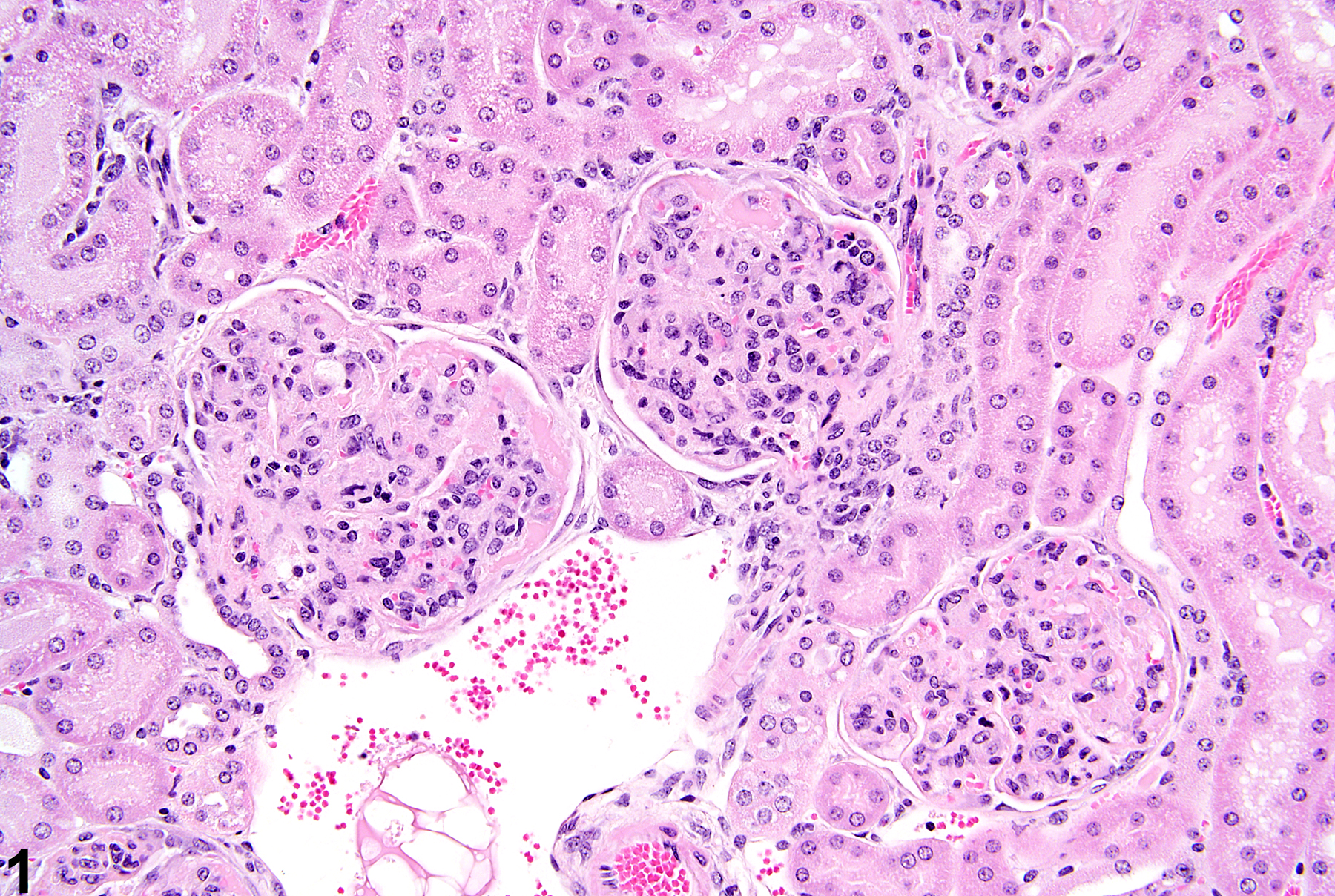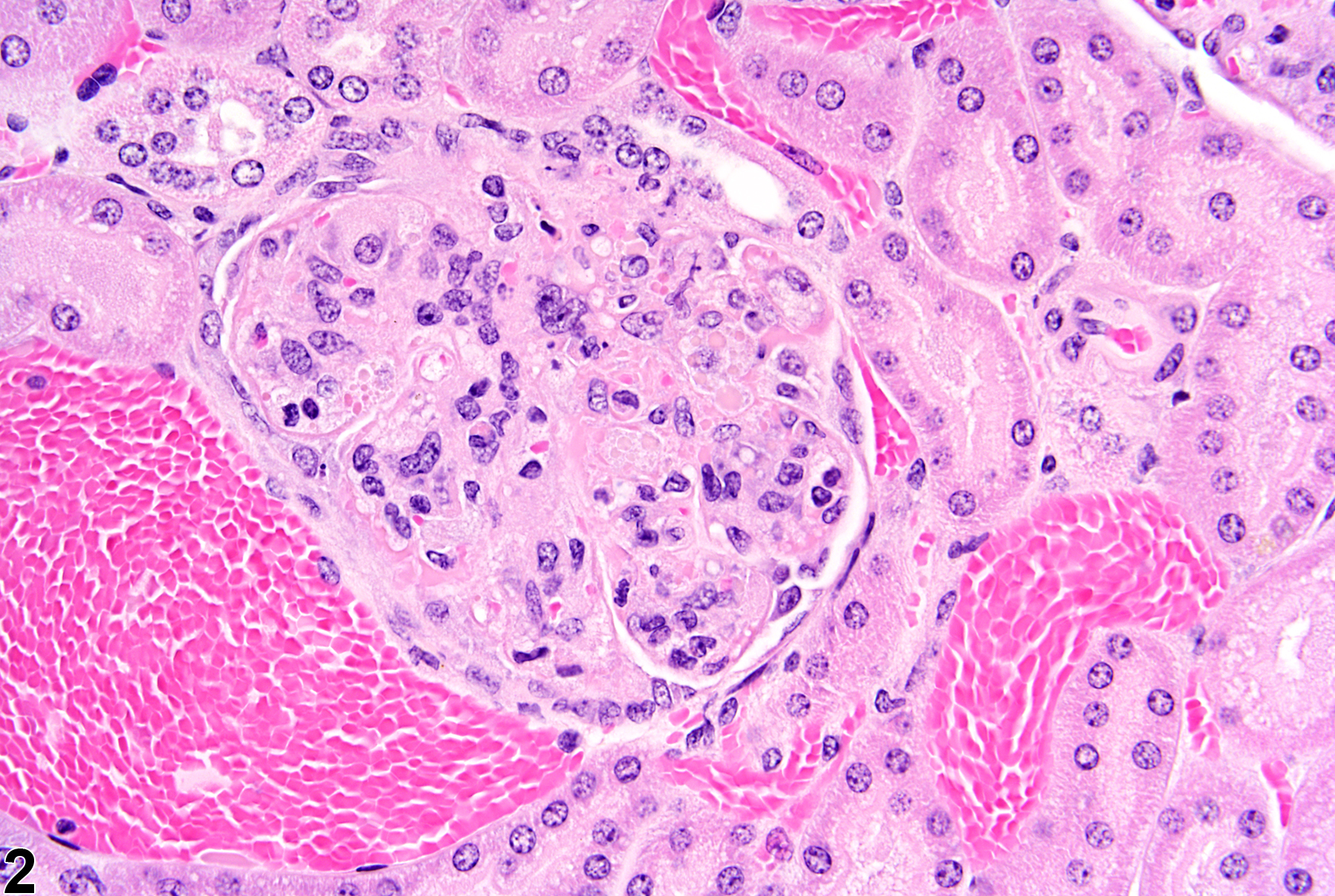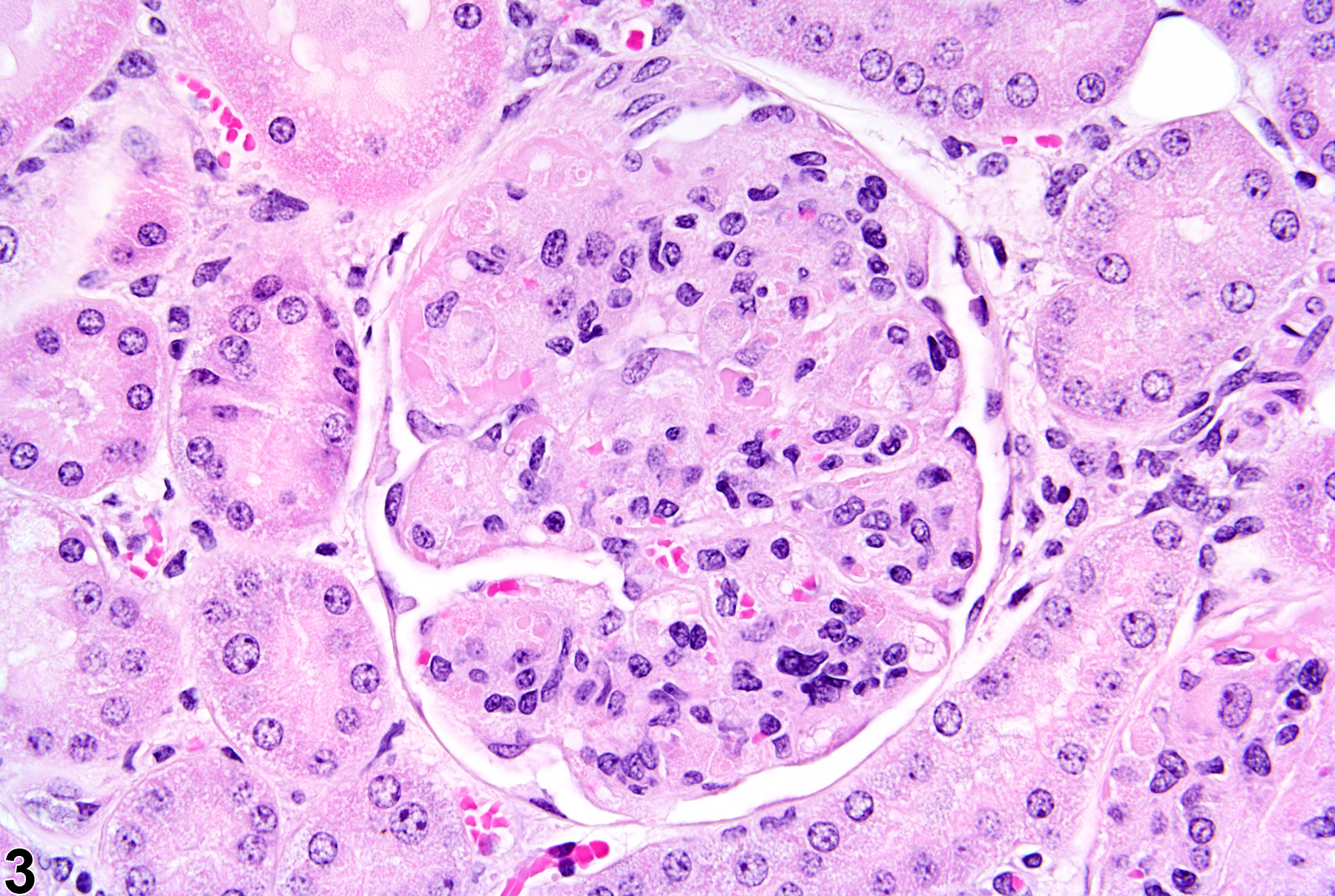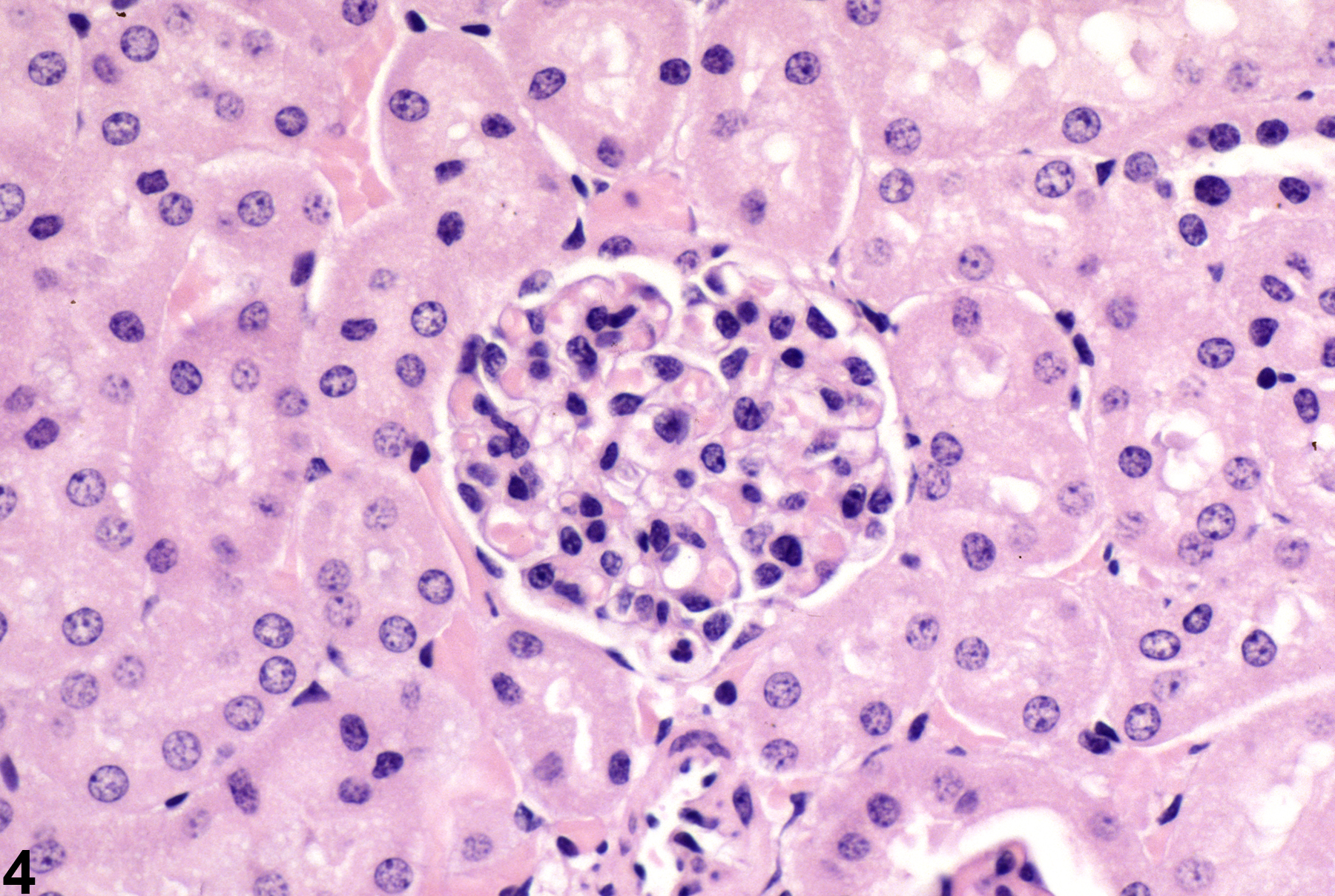Urinary System
Kidney - Glomerulonephritis
Narrative
Bruijn JA, de Heer E, Hoedemaeker PJ. 1998. Immune mechanisms in injury to glomeruli and tubulointerstitial tissue. In: Monographs on Pathology of Laboratory Animals: Urinary System, 2nd ed (Jones TC, Hard GC, Mohr U, eds). Springer, Berlin, 199-224.
Abstract: http://www.ilsi.org/publications/urinarysystem.pdfFrazier KS, Seely JC, Hard GC, Betton G, Burnett R, Nakatsuji S, Nishikawa A, Durchfeld-Meyer B, Bube A. 2012. Proliferative and non-proliferative lesions in the rat and mouse urinary system. Toxicol Pathol 40:14S-86S.
Abstract: http://www.ncbi.nlm.nih.gov/pubmed/22637735
Kidney - Glomerulonephritis in a female B6C3F1 mouse from a chronic study. Glomerulonephritis is characterized by enlarged glomeruli with increased cellularity and mesangial expansion.





